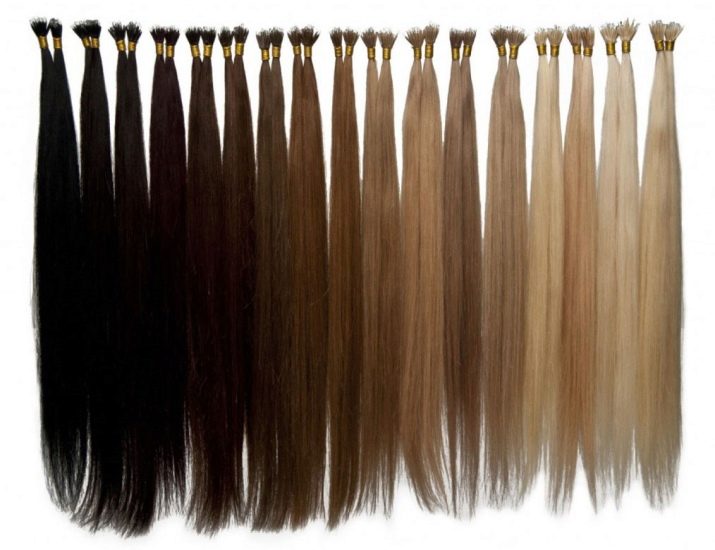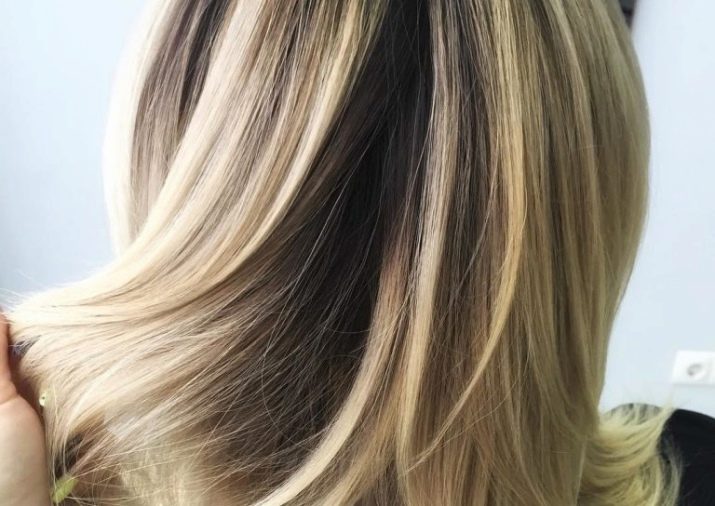Features and differences of Slavic hair extensions

Nowadays, thin hair is not a problem, at least for the female half of humanity. Hair extension technology has made great strides in the past few years. But in this matter, not only the hand of a master and high-quality material is needed, but also your own, albeit just basic, knowledge. Luxury material for hair extension is Slavic curls. This article will give a description of Slavic hair and will tell you in detail why it is better than other types of curls.

What it is?
The so-called Slavic curls are the highest quality hair extension material. These strands are carefully selected by hand. Short, low-grade or gray hair does not fall into these curls. Due to the fact that each hair is laid in one direction of the scales, such curls do not get confused. After selection, they are thoroughly cleaned (disinfected), and then painted in the required color.

The curls obtained as a result of all treatments are folded and fastened with elastic bands or tresses. As a result, it is safe to say that Slavic hair extensions are of high quality - this is the best material for extensions. The hairs in such curls are rather thin, they do not get confused with each other, they have a healthy shine.

Such hair undergoes minimal processing and is dyed only with gentle formulations. The "homeland" of these strands is Russia, Ukraine and Belarus, which is why such curls are most suitable for girls of Slavic appearance.

Features, pros and cons
Slavic hair extensions have several key features, with which it is important to familiarize yourself before choosing this type of artificial curls for yourself.
- Since the "Slavic woman" is practically not subjected to processing, there is a possibility that live bacteria may remain on the hairs. This can be a risk factor for people with frequent allergy attacks.
- The average wearing period of such strands is 5 years.

- Hair easily tolerates exposure to hot air - a hairdryer and hot climatic conditions.
- The weakest point is the mount. This area should not be exposed to direct or near exposure to hot air or chemicals.
- Very obedient - easy to fit, do not require long and careful curling or other processing.

- Most often, Slavic hair is produced on ribbons, in other forms - less often.
- Recently, Slavic hair with hairpins has become popular, which is much easier to wear than extended hair. They are easy to remove and put on, do not require special care, and the hair clip is almost invisible.

Advantages:
- this type of hair can be worn for a long time, it does not deteriorate and does not lose its beautiful appearance;
- curls are no different from natural;
- can be used when overgrowing;

- soft to the touch, do not get confused;
- there are a large number of colors available;
- perfectly tolerate any extension technology, including microcapsule, hot, cold, on tapes;

- lend themselves well to dyeing and curling / straightening while wearing;
- on Slavic curls, highlighting and other types of lightening can be done (as a rule, a hydrogen peroxide solution of no more than 1.5% percent is used);

- there is an opportunity to purchase both straight curls and curled or even curly;
- with such curls, you can go to the pool, bathhouse, sauna, since they tolerate changes in temperature and humidity well.

The disadvantages of this type of hair include their high price - almost 10 thousand rubles, and thinness. The latter is inconvenient in that you will need a fairly large number of curls during the extension procedure if you want thick hair. Also, due to their high price, such curls are often faked. Asian hair, which is the cheapest extension material, is often passed off as "Slavic" by sellers.


Correct care
Consider some of the features of caring for artificial curls.
- When wearing curls, you need to wash your hair several times a week with a special shampoo for hair extensions.
- Masks, balms, conditioners and oils will be a good addition to care and nutrition for both natural and extended hairstyles.
- It is best to comb with a brush with natural bristles, since it is this brush that least of all damages the attachment points to natural hair.
- Like natural hair, hair extensions should not be combed wet or wet - the risk of damage increases.
- It is not recommended to curl or pull the hair tightly with an elastic band or bobby pins.

In no case should you fall asleep with a wet or damp head after a shower. Hair extensions in the morning can get tangled in the attachment points.
Difference from other types
Each type of hair extension has its own characteristics, pros and cons. Most often, Slavic curls are compared with South Russian and European ones. Let's dwell on the differences in more detail.
- If Slavic hair can be dyed in any color, then among the South Russian curls there is no blond and some other light shades.
- Unlike the "Slav", the South Russian hair is rather coarse to the touch.
- If the "Slav" is practically not confused, then the South Russian strands have a slight confusion and fluffiness.

- The main difference, and, perhaps, the advantage is the much more favorable price of South Russian hair than that of the "Slav" woman. Considering the fact that the relative level of hair quality in both types is practically the same.
- The hairs in the South Russian curls are thicker and denser than in the Slavic ones, which implies a much lower consumption when building. South Russian strands can add significant volume to a hairstyle, even in small quantities.

But the difference between "Slavic" and European hair is noted already at the very initial stage of selection. European curls are a byproduct of combing out Slavic strands, so they differ greatly in quality.
European strands are confused, since they cannot be folded along the general direction of the scales, each hair is different.
The term of wearing European curls is greatly reduced in comparison with the "Slavic". In addition, European curls cannot be overstretched. After each shampooing procedure, they can lose their attractive appearance and become very confused. The advantage is the affordable price - about 3 thousand rubles for 100 strands, which is quite enough for a full hair extension for one person.

In conclusion, it should be noted that when choosing a material, it is quite easy to encounter a fake. It is worth purchasing material for building only from trusted sellers or contacting specialists in this matter. Otherwise, it is quite possible to spend a lot on low-quality curls.
For information on which hair to choose for extension, Slavic or European, see the next video.








